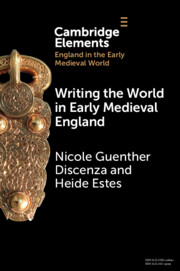Element contents
Writing the World in Early Medieval England
Published online by Cambridge University Press: 08 September 2023
Summary
- Type
- Element
- Information
- Online ISBN: 9781108943147Publisher: Cambridge University PressPrint publication: 28 September 2023

